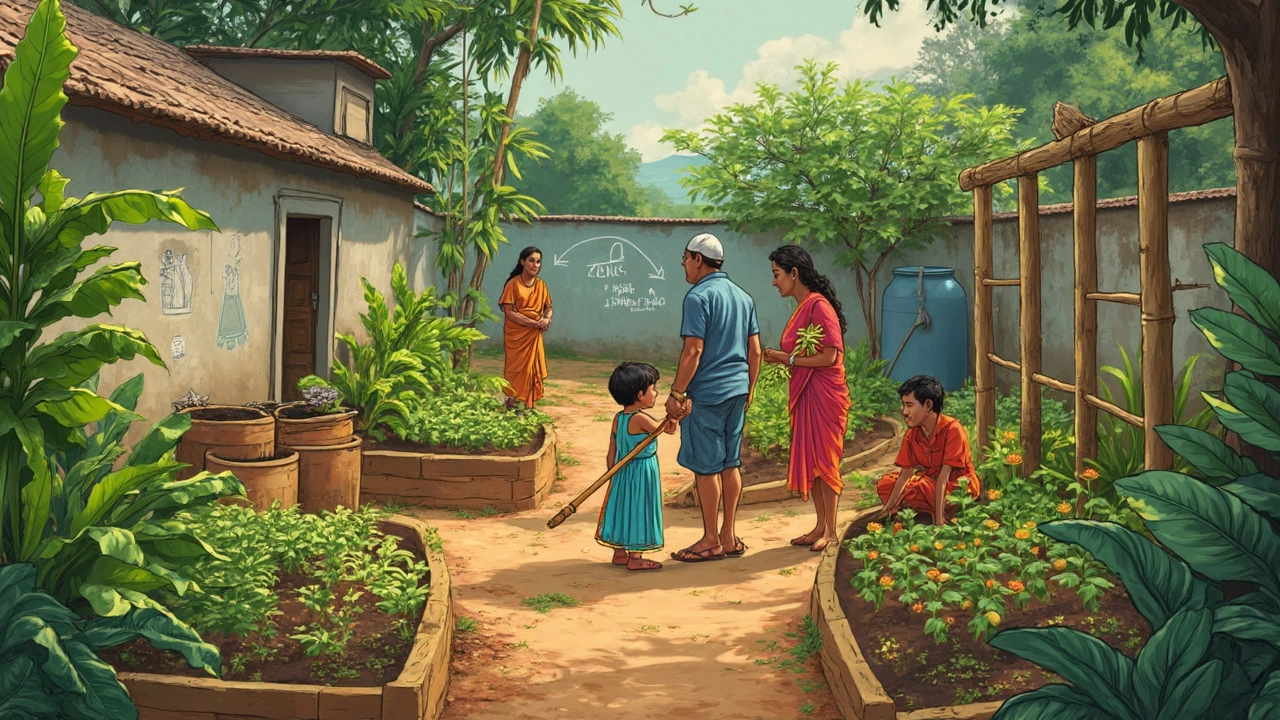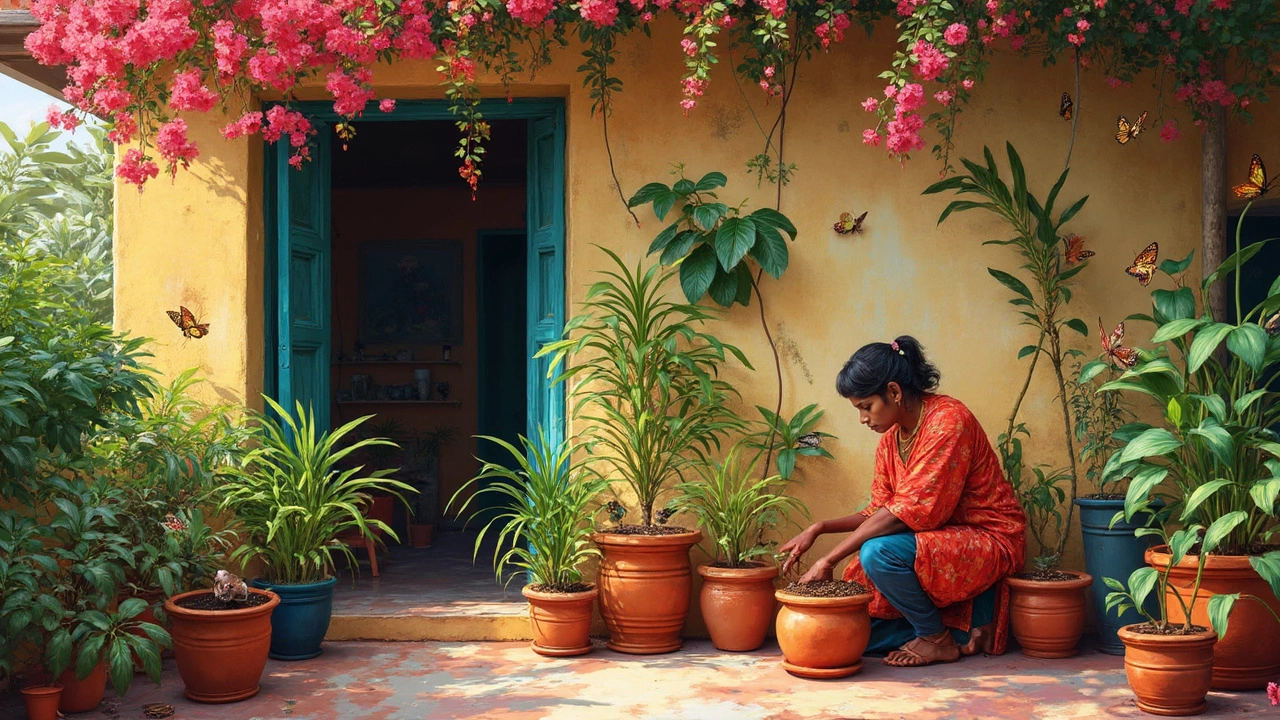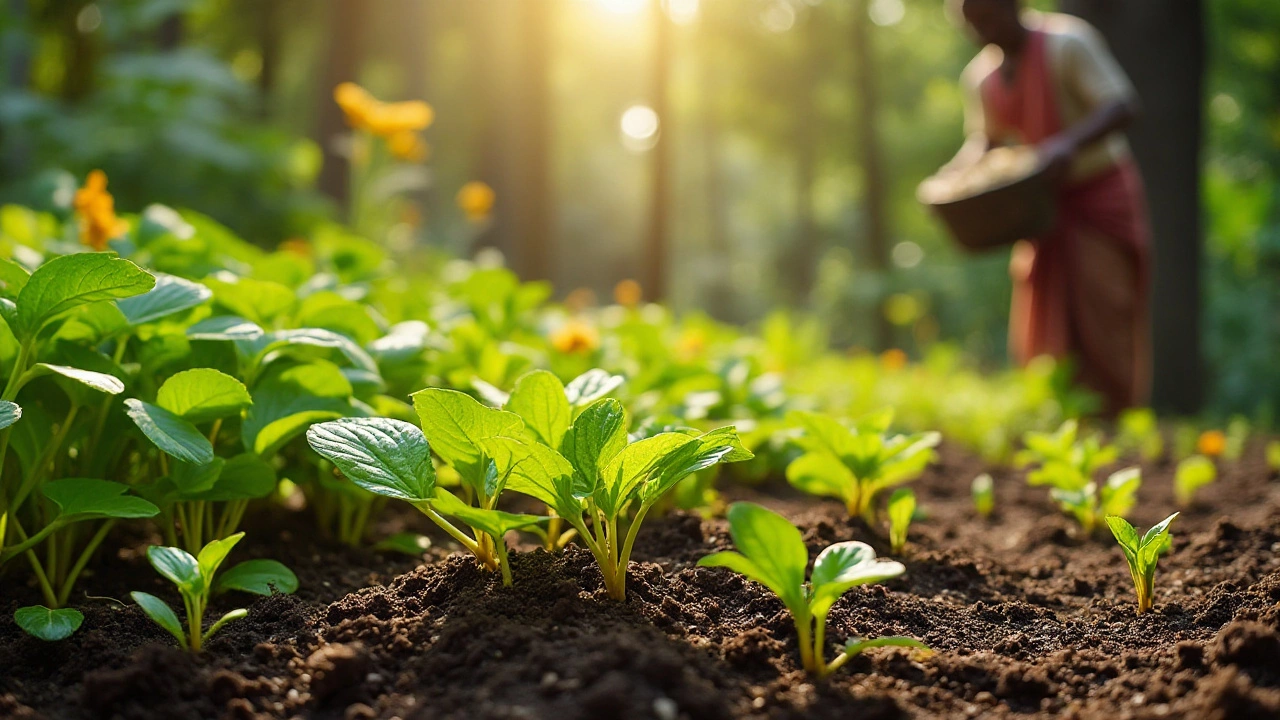Gardening Tips India: Practical Advice for Every Indian Garden
When working with gardening tips India, a set of locally‑adapted practices that help Indian gardeners grow healthy plants across diverse climates. Also known as Indian gardening advice, it blends traditional knowledge with modern techniques to make gardening doable on balconies, rooftops, and small yards.
If you're hunting for gardening tips India that actually work, you're in the right place. One popular method is container gardening, growing plants in pots, trays or recycled containers, perfect for limited space and urban settings. This approach influences watering schedules because soil in pots dries faster than ground beds. Testing soil moisture with a finger or a cheap meter becomes a daily habit for many Indian hobbyists.
Another water‑saving technique is drip irrigation, a low‑pressure system that delivers water directly to the root zone through emitters or tubing. Gardening tips India often require drip setups to conserve scarce rainwater, especially during the hot summer months in Delhi or Hyderabad. A simple DIY kit can be installed on a balcony, and the system pairs well with mulch to keep the soil cool.
For gardeners looking to improve soil health without heavy labor, no‑till gardening, a method that avoids traditional plowing and instead builds organic matter on the surface is gaining momentum. This practice enhances soil structure, boosts microbial activity, and reduces erosion on sloped plots in the Western Ghats. When combined with compost mulches, no‑till creates a moisture‑retaining blanket that cuts down watering needs.
Seasonal timing matters a lot in India. During the monsoon, most regions receive ample rain, so the focus shifts to drainage and pest control. In contrast, the pre‑summer months demand early morning watering, shade nets, and soil wetting agents like humic acid. Understanding the local climate lets you adapt the general gardening tips India framework to specific states—whether you’re in the humid coastal zones of Kerala or the dry interior of Rajasthan.
Pest management is another core piece of the puzzle. Neem oil sprays, companion planting of marigold with tomatoes, and encouraging beneficial insects like ladybugs are low‑cost strategies that fit well with the organic ethos of many Indian gardens. Chemical pesticides are rarely needed when you keep the soil alive and the plant canopy dense.
Soil rehydration after a dry spell is simple but often overlooked. Adding a layer of organic compost, followed by a shallow watering, helps the soil soak up moisture faster than water alone. For heavy clay soils found in parts of Uttar Pradesh, incorporating coarse sand or crushed brick fragments improves drainage and prevents waterlogging.
All these points—container gardening, drip irrigation, no‑till methods, seasonal scheduling, pest control, and soil rehydration—form the backbone of effective gardening tips India. Below you’ll find a curated set of articles that dive deeper into each technique, share real‑world case studies, and give step‑by‑step guides you can start using right away.
Best Season for Planting in India: Your Guide to Seasonal Plants
Choosing the right season for planting can make or break your gardening journey in India. With unique climates ranging from the Himalayan north to the tropical south, knowing when and what to plant is crucial. This article breaks down the best planting seasons, offers practical tips, and busts myths about timing. Whether you’re working with a balcony or a backyard, you’ll find strategies to get the most from every seed. We’ll help you grow stronger, healthier plants with less hassle.
- manufacturing
- India
- food processing
- garden tips
- rice cultivation
- government schemes
- balcony garden
- urban gardening
- balcony gardening
- profitable business
- business ideas
- plastic manufacturing
- drip irrigation
- plant care
- steel manufacturing
- sustainable gardening
- startup ideas
- steel industry
- flower gardening
- textile manufacturers






